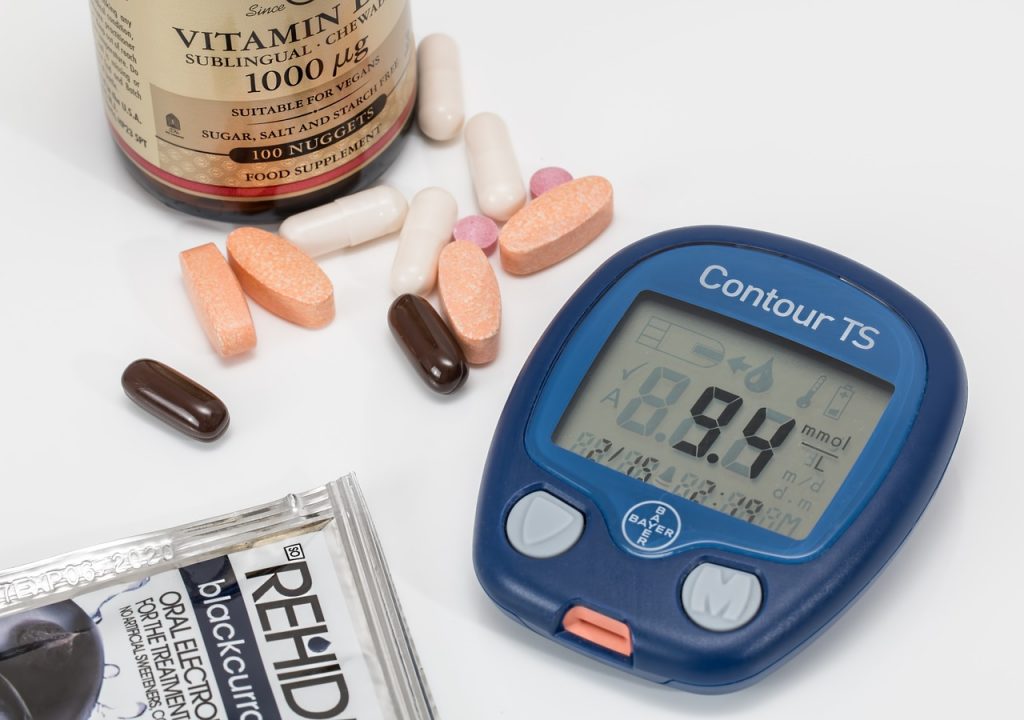What to eat in diabetes, What are the best diet tips for diabetes?
The Diabetes Diet: What to eat in diabetes, What are the best diet tips for diabetes?
Effective Healthy Eating Tips to Prevent and Reverse Diabetes
People with diabetes have a high risk of heart disease and mental health disorders like depression. But many cases of type 2 diabetes can be reserved. Taking steps to prevent or even control diabetes does not necessarily mean living in deprivation. It only means eating a delicious and balanced diet, boosting your energy and improving your mood. There is no need to give up your favorite sweets or resign yourself to bland food.
With the following tips, you have the opportunity to take pleasure in every meal you take without feeling hungry.

What’s the best diet for diabetes?
Whether you’re trying your best to prevent or control diabetes, your nutritional needs are the same as everyone else. That is why special foods are not important at all. However, you have to pay attention to your food choices, more specifically the carbohydrates you eat. While a Mediterranean healthy diet can help with this, the most indispensable thing you can do is lose a pound.
Losing at least 5% or 10% of your weight can help you lower your blood pressure, blood sugar, and cholesterol levels. Eating healthier can likewise have a great effect on your energy, sense of well-being, and mood.
Although you have developed diabetes, it is never too late to make a change. By incorporating a healthier diet into your lifestyle, being physically active, and losing weight, you can reduce the symptoms and reverse diabetes. You will gain control over your health as well.
The biggest risk for diabetes: belly fat
Being obese, commonly known as over weight is the biggest factor for type 2 diabetes. In case you carry your weight around your abdomen, your risk is even higher. Belly fat surrounds the liver and abdominal organs. It is also associated with insulin resistance.
You have an increased risk of acquiring diabetes if you are:
- A woman with 35-inch waist circumference or more
- A man with 40-inch waist circumference or more
Calories from sugary beverages such as sports drinks, coffee drinks, soda, and processed foods are more likely to increase weight around your abdomen. Cutting back on these foods can mean a slimmer or healthier waistline. It can also mean a lower risk of type 2 diabetes.
Planning a diabetes diet
A diabetic diet does not need to be complicated. It does not mean giving up your favorite food. All you have to do is separate the myths from the facts about eating.
| Myths and facts about diabetes and diet |
| Myth: You must avoid sugar at all costs.
Fact: you can still enjoy your favorite treats unless you plan and limit sugars. Dessert does not have to be off limits as long as it is a part of a relevant and healthy meal plan.
|
| Myth: You have to cut way down on carbs.
Fact: The kind of carbohydrates you eat and the serving size are important. Instead of starchy carbs, consider whole grain carbs because they are rich in fiber. When digested slowly, the level of your blood sugar will be much even.
|
| Myth: You’ll need special diabetic meals.
Fact: Whether or not you have diabetes, the principles of healthy eating remain the same. Generally, costly diabetic foods do not offer any special benefit.
|
| Myth: A high-protein diet is best.
Fact: Studies have indicated that eating much protein like animal protein, may lead to insulin resistance. A healthy diet does not only include protein. It needs enough fats and carbohydrates. Taking all important vitamins and minerals can help the body to function properly. So, a balanced diet is possible.
|
Like with any healthy eating program, a diet for you with diabetes focuses on your overall dietary pattern. Aim to eat more unprocessed, natural, and less packaged foods for your health.
Eat more
- Healthy fats from avocados, olive oil, nuts, flax seeds, or fish oils
- Fruits and veggies – ideally fresh and organic
- High-fiber bread and cereals
- Fish and shellfish, organic turkey or chicken
- High-quality protein, including beans, unsweetened yogurt, eggs, and low-fat dairy
Eat less
- Trans fats from deep-fried or partially hydrogenated foods
- Fast and packaged foods, especially those loaded with sugar such as baked goods, chips, desserts, and chips
- Sugary cereals, refined pasta, rice, or white bread
- Red or processed meat
- Low-fat products that have replaced fat with synthetic sugar like fat-free yogurt
Choose slow-release or high-fiber carbs
Carbohydrates have a huge effect on the level of your blood sugar. So, you have to be smart which type of carbs to eat. Limit yourself from white bread, rice, soda, packaged meals, pasta, candy, snack foods, and packaged meals because they are rich in refined carbohydrates. They also prevent the body from producing enough insulin.
What about the glycemic index?
High glycemic index foods increase your blood sugar. White low GI, on the other hand, has the least impact on blood sugar. While the GI has been promoted as an effective solution to manage blood sugar, there are still drawbacks.
- The health benefits of using the GI is still unclear.
- Referring to GI tables makes eating complicated.
- The GI does not measure the healthfulness of food.
- Research suggests that by following healthy diets, there will be a drop in your glycemic load. Plus, you will improve the quality of your diet.
Choosing carbs that are full of fiber
| Instead of | Try these high-fiber choices |
| White rice | Riced cauliflower or brown rice |
| White potatoes | Yams, cauliflower mash, sweet potatoes |
| Regular pasta | Spaghetti squash, whole-wheat pasta |
| White bread | Whole-grain or whole-wheat bread |
| Sugary cereal | Low-sugar or high-fiber cereal |
| Instant oatmeal | Rolled or steel-cut oats |
| Cornflakes | Low-sugar bran flakes |
| Corn | Leafy greens or peas |
Be cautious about sweets
A diet for people with diabetes does not mean eliminating sugar. Most people consume more sugar than the healthy amount. If you have diabetes, you can enjoy a small serving of a dessert. But bear in mind to eat sweets in moderation to avoid health complications.
Reduce your cravings for sweets by slowly eliminating the sugar in your diet. It will give your taste buds enough time to adjust.
Hold the bread (rice or pasta) if you want dessert. Eating your favorite sweets at a meal adds a high amount of carbohydrates. Thus, reduce carb-heavy foods at a particular meal.
Add some healthy fat to your dessert. Fat slows down the normal process of digestion, meaning your blood sugar levels do not spike in a snap. That does not mean you should eat donuts. Consider healthy fats in peanut butter, yogurt, nuts, or ricotta cheese.
Eat sweets with a meal, rather than as a stand-alone snack. When you eat sweets alone, your blood sugar will increase. But when eaten with other healthy foods, your blood sugar will not rise rapidly.
When you consume dessert, truly savor every bite. How many times have you eaten a bag of cookies or a whole piece of cake? Can you say that you enjoyed every bite? Make your indulgence count by paying attention to the textures or flavors. It’s sure you will enjoy the food more. And you will not overeat.
The trick for cutting down on sugar
Reduce soft drinks, soda,and juice. Each 12 oz. of a sugar-sweetened beverage can boost your risk to have diabetes by 15%. It is better to try a glass of water. Just add a twist of lime or lemon. When it comes to the tea and coffee, cut down sweeteners or creamers.
Don’t replace saturated fat with sugar. Many people replace saturated fat with refined carbs as they believe that it is a healthier choice. Low-fat will not be healthy when synthetic sugar has replaced the fat.
Sweeten foods yourself. Purchase unsweetened ice tea, unflavored oatmeal, or plain yogurt. Just add sweetener or fruit yourself. It is a good way to minimize less sugar than the product manufacturer.
Check labels and choose low sugar products. Use frozen or even fresh ingredients instead of processed or inorganic goods. Plus, be careful of the sugar content of drinks and cereals available in the market.
Avoid processed or packaged foods such as canned soups, low-fat meals, or frozen dinners because these are often loaded with hidden sugar. It is a brilliant idea to prepare more meals at home.
Reduce the amount of sugar in recipes by at least ¼. You can still make your food sweet by using cinnamon, mint, vanilla extract, or nutmeg.
Find healthy ways to satisfy your sweet tooth. Instead of eating ice cream alone, blend it up with frozen bananas for a creamy treat. Or indulge yourself with a chunk of chocolate, rather than a milk bar.
Start with half of the dessert you normally eat and consider fresh and organic fruits.
Be careful about alcohol
Sometimes, you may underestimate the carbs and calories in alcoholic drinks such as wine and beer. And cocktails with juice and soda can be packed with sugar. Pick calorie-free mixers and drink with food. Also, don’t forget to monitor your blood sugar because alcohol can affect your medication and insulin.
Identify hidden sugar
Being wise about sweets is also a key. Sugar is hidden in most a variety of packaged foods, grocery store staples, and fast food meals. The first step is to determine hidden sugar on the labels that require extensive investigation.
Never forget to do some detective work
All manufacturers are required to provide the exact amount of sugar in a serving. However, they do not spell out how much sugar has been addedto the food. The technique is analyzing which ingredients are added sugars.
Apart from the obvious ones, including sugar, honey, and molasses, added sugar can typically appear as corn sweetener, cane crystals, agave nectar, crystalline fructose, evaporated cane juice, high fructose corn syrup, lactose, invert sugar, maltose, and malt syrup.
A cautious strategy is to avoid products that have these added sugars in the list of the ingredients. Also, eliminate the ones that have different types of sugar. In case a product is full of sugar, you would see “sugar” in the list.
However, food makers can change the list. They can add sweeteners that are not sugar. The trick is that every sweetener is listed separately. Its contribution may be small that it shows up fourth or even fifth in the list. Be sure to add them up and get an overwhelming dose of added sugar.
Adapted with permission from Reducing Sugar and Salt, a special health report published by Harvard Health Publications.
Choose fats carefully
Some fats have enormous health benefits,and others are unhealthy, so it is necessary to opt for fats wisely.
Unhealthy fats. Artificial trans fats are the most damaging fats, making vegetable oils less likely to spoil. Never buy commercially-baked goods, fried food, or packaged snack foods. Furthermore, avoid partially hydrogenated oil though it claims to be free of trans-fat.
Healthy fats. Unsaturated fats are the healthiest fats that come from plant sources such as nuts, olive oil, and avocados. They are also made from fish. Omega-fatty acids support heart and brain health. It can likewise fight inflammation. Good sources include flaxseeds, salmon, and tuna.
Saturated fats. Commonly found in tropical oils, dairy, and red meat, you don’t have to avoid saturated fat. You can still enjoy it with moderation. The American Diabetes Association recommends consuming at least 10% of your calories from saturated fat.
Different ways to add healthy fats and reduce unhealthy ones:
- Instead of crackers, nuts or seeds are a good snack. You can add them to your cereal. Also, nut butter is satisfying and delicious.
- Instead of frying, it is better to stir-fry, broil, or bake.
- Eliminate fats from packaged meals, takeout food, or processed meats in your diet.
- Instead of red meat, incorporate skinless chicken, fish, vegetarian sources of protein, and eggs into your daily meals.
- Utilize virgin olive oil to dress cooked vegetables or salads.
- Commercial salad dressings are full of trans fat and calories, so create your own using sesame oil, olive oil, or flaxseed oil.
- Add fruits to sandwiches and salads.
- Enjoy dairy products in moderation.
Keep a food diary
Knowing that you only need to lose 7% of your weight to cut the risk of diabetes is very encouraging. But you don’t have to count calories or even starve yourself to achieve your goal. One of the most useful strategies is to follow a regular eating schedule.
Eat at regularly set times
Your body can regulate a good level of blood sugar and weight when you maintain a meal schedule. Strive for moderate sizes for every meal you take.
Start your day off with a good breakfast. A healthy breakfast will provide you with steady blood sugar levels and enough energy.
Eat regular small meals – up to 6 per day. Eating regularly will help you check every portion of your meal.
Keep calorie intake the same. Try to eat the same amount on a daily basis to regulate your blood sugar levels.
Learn how to lose weight and keep it off. In case your recent diet attempt was a failure, never feel discouraged. The solution that best suits your needs is to find a relevant and responsive plan. Using an effective program can reduce diet pitfalls and ensure a weight loss success within a long run.
Photo sources: pixabay.com


